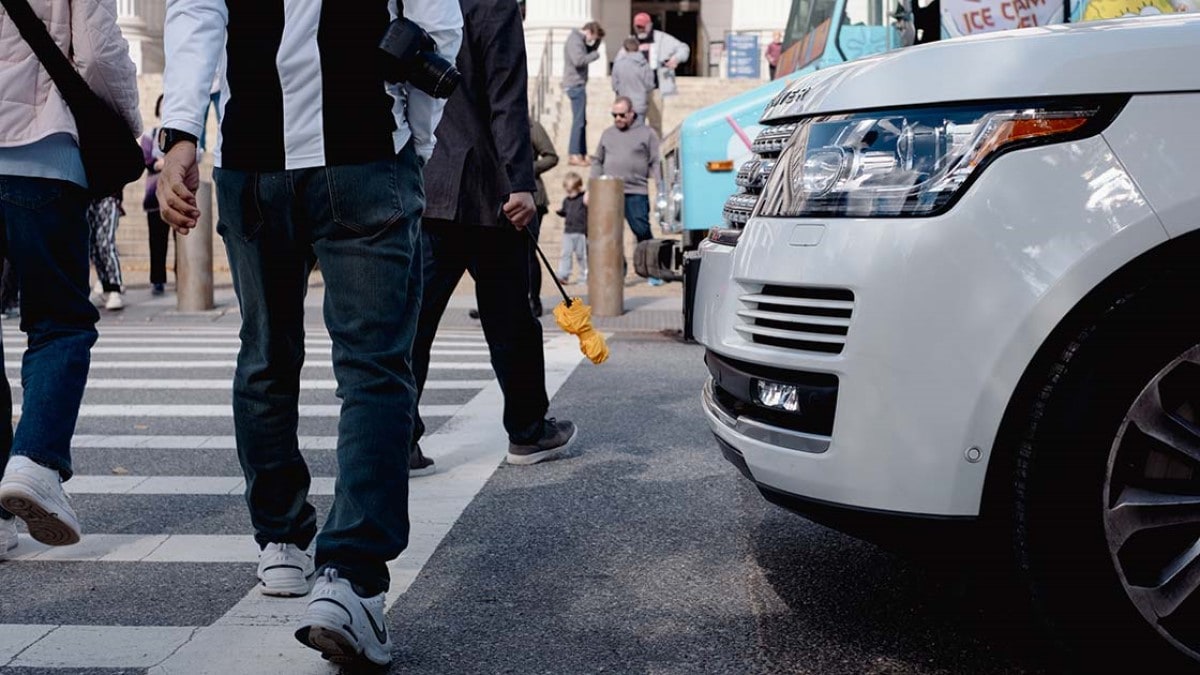If 2023 has a vehicle design trend, it’s boxy. Sleek is out. Angular is in.
Automakers are redesigning their new SUVs as if all they have access to is a T-square. New SUV designs of just a few years ago were softer and smoother, with an eye on aerodynamics. More recent redesigns look built with a chisel, not sculpted from clay. The 2024 Chevrolet Traverse, 2024 Hyundai Santa Fe, 2023 Honda Pilot, and other new designs look upright and crisp.
It worries your insurance company.
Related — Safety Group: Pedestrian Deaths From Cars Hit 41-Year High
Insurance Laboratory Issues Warning
A new analysis from the Insurance Institute for Highway Safety (IIHS) finds that today’s flat-nosed vehicles are more dangerous to pedestrians.
The IIHS is not a government laboratory. It’s funded by a consortium of insurance companies with a financial interest in making car accidents less likely.
Prior IIHS studies have found a direct relationship between vehicle height and pedestrian deaths. Today’s taller pickups and SUVs are more likely to hit and kill pedestrians than sedans or even the lower trucks and SUVs of previous generations.
A new IIHS study, however, finds that even lower vehicles can be dangerous thanks to blocky, upright profiles.
Height Is a Problem; So Are Angles
“Whatever their nose shape, pickups, SUVs, and vans with a hood height greater than 40 inches are about 45% more likely to cause fatalities in pedestrian crashes than cars and other vehicles with a hood height of 30 inches or less and a sloping profile,” say the results of an IIHS analysis of nearly 18,000 pedestrian crashes. “However, among vehicles with hood heights between 30 and 40 inches, a blunt, or more vertical, front end increases the risk to pedestrians.”
And pedestrians are increasingly at risk. “Pedestrian crash deaths have risen 80% since hitting their low in 2009,” the institute says.
The problem is double-pronged. Grilles at or near 90 degrees create a broad “front blind spot” where drivers can’t see pedestrians. A flatter front fascia also tended to “injure pedestrians by throwing them forward, while tall and sloped vehicles usually rolled them onto the hood of the vehicle first,” researchers write.
“It’s clear that the increasing size of the vehicles in the U.S. fleet is costing pedestrians their lives,” says IIHS President David Harkey. “We encourage automakers to consider these findings and take a hard look at the height and shape of their SUVs and pickups.”








